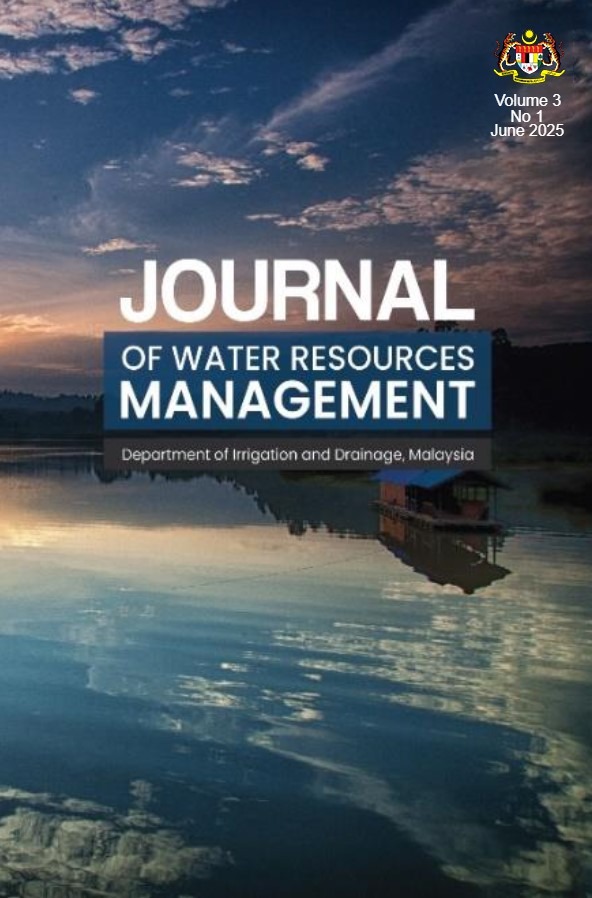Analysis of Ammonia and Copper Concentrations on Surface Runoff: A Study of Spatial Distribution at KM 14 – KM 15, Jalan Kluang
Published 10-07-2025
Keywords
- analytical method,
- ammonia,
- copper,
- grab sampling technique,
- road runoff
- spatial distribution mapping ...More
How to Cite
Copyright (c) 2025 Journal of Water Resources Management

This work is licensed under a Creative Commons Attribution-NonCommercial-ShareAlike 4.0 International License.
Abstract
This study aimed to analyse ammonia (NH3) and copper (Cu) concentrations on surface runoff of spatial distribution at KM 14 – KM 15, Jalan Kluang. The purpose of this study was to investigate the water quality of the surface runoff at KM 14 – KM 15, Jalan Kluang and to develop the spatial distribution of ammonia and copper concentrations along the surface runoff at KM 14 – KM 15, Jalan Kluang. The focused parameter in this research study is copper (Cu) and ammonia (NH3). Other parameters such as pH, dissolved oxygen and temperature can also be measured runoff characterisitcs. The grab sampling technique was used in this study. Six sampling points were located, and 4-four consecutive weeks were conducted to run this study. This research study used an analytical method to process the data collection. Overall results indicate that the parameters of this study, such as temperature, dissolved oxygen, pH, ammonia (NH3) and copper (Cu), could affect the water quality. Based on the research study conducted, KM 14 – KM 15, Jalan Kluang runoff could be concluded that the water quality of parameters such as ammonia, copper, dissolved oxygen, pH and temperature are ranging between 0.03 – 17.05 mg/L, 0.09 – 0.44 mg/L, 3.31 – 5.92 mg/L, 5.12 – 7.34 mg/L, and 24.8 – 26.9 °C, respectively. All the data analyses were compared to the discharge effluent conditions of Standards B Environmental Quality Act (1974). The software for spatial distribution was determined by using Surfer 16 software. Spatial distribution mapping of copper (Cu) and ammonia (NH3) has been developed to determine the most polluted area along the runoff at KM 14 – KM 15, Jalan Kluang. The spatial distribution contributes with high technique to determine the polluted area by inputting the longitude, latitude and the data value of each parameter each week. This research study enables the localisation of road runoff facilities and the determination of the highest and lowest concentrations of ammonia and copper pollutants across six different sampling locations, utilising data collection and producing contour mapping software.

